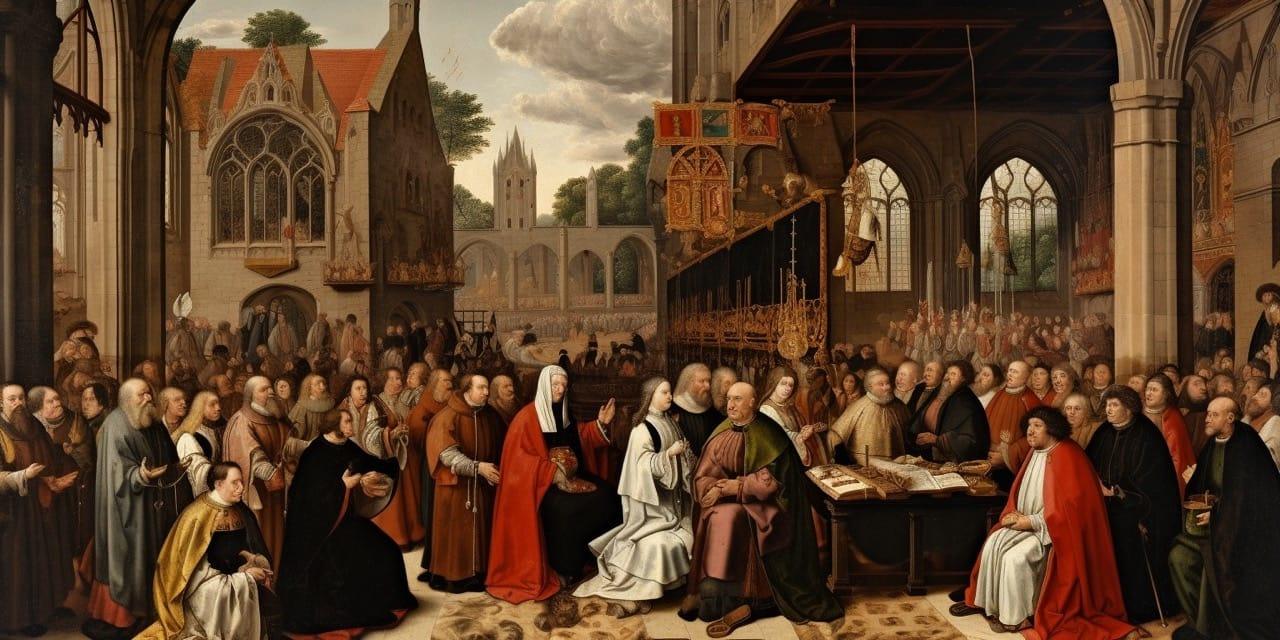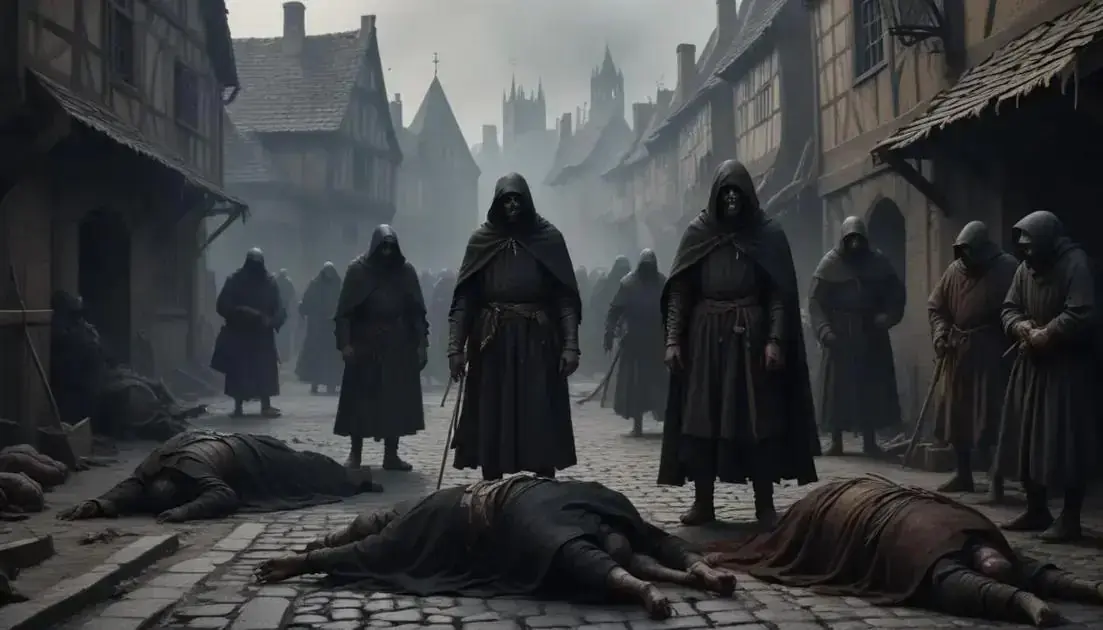
The Role of the Catholic Church in Shaping Medieval Europe
The Catholic Church’s influence on Medieval Europe (roughly 5th to 15th centuries CE) was profound and multifaceted, extending far beyond the purely spiritual realm. It permeated every aspect of society, from politics and governance to culture, art, economics, and social structures. Understanding this influence requires examining the Church’s authority, its interactions with secular powers, its patronage of the arts and learning, and its impact on the daily lives of medieval Europeans. The Church’s legacy continues to resonate in modern Western civilization, shaping our institutions, values, and cultural landscape.
I. Establishing Authority and Influence: The Papacy and the Hierarchical Structure
The Catholic Church’s power in Medieval Europe stemmed from its claim to spiritual supremacy, a claim bolstered by the belief in the divine authority passed down from the Apostle Peter to the Bishop of Rome – the Pope. This claim wasn’t just theological; it had significant practical implications. The Pope, as the head of the Church, wielded considerable power, often intervening in the affairs of secular rulers and claiming jurisdiction over temporal as well as spiritual matters. This led to frequent power struggles between the papacy and earthly monarchs, a dynamic that played out repeatedly throughout the Middle Ages.
The Church’s organizational structure mirrored its claim to universal authority. A rigid hierarchy, stretching from the Pope at its apex down through cardinals, archbishops, bishops, priests, and monks, ensured control and uniformity across Europe. This hierarchy facilitated effective administration and communication, allowing the Church to maintain its influence across vast distances and diverse cultures. The local parish priest, while at the bottom of the hierarchy, was a crucial figure in the daily lives of medieval people, providing spiritual guidance, administering sacraments, and acting as a local authority figure.
II. Canon Law and the Regulation of Society
The Church’s authority wasn’t solely based on the charisma or power of individual figures; it was also systematically enforced through Canon Law. This body of ecclesiastical law covered a broad range of issues, including marriage, inheritance, morality, and the conduct of both clergy and laity. Canon Law influenced secular law, often providing a moral framework for legal codes and judicial processes. For instance, the Church’s prohibition of certain practices or behaviors, like usury (charging interest on loans), profoundly shaped economic activity. The Church courts also held considerable power, handling cases involving matters of faith, morality, and marital disputes, sometimes overlapping with or even challenging secular courts’ jurisdiction. This intricate system of legal and ecclesiastical institutions gave the Church deep roots in the fabric of medieval society.
III. The Church as Patron of the Arts and Learning:
The Catholic Church was not only a powerful political and legal entity but also a major patron of the arts and learning. Monasteries and cathedral schools served as centers of scholarship and preservation of classical knowledge. Monks diligently copied and transcribed ancient texts, ensuring the survival of many crucial works of literature, philosophy, and science. This act of preservation played a vital role in transmitting knowledge across generations and contributing to the intellectual life of the Middle Ages.
The Church’s artistic patronage is perhaps most evident in the stunning architecture of the period. Romanesque and, later, Gothic cathedrals were not merely places of worship; they were grand statements of religious authority and artistic achievement. These magnificent buildings, often adorned with intricate sculptures, stained glass windows, and illuminated manuscripts, served as powerful symbols of the Church’s wealth and influence, inspiring awe and reverence in the faithful. The commissioning of religious art – paintings, sculptures, and illuminated manuscripts – helped develop artistic techniques and styles, contributing to the flourishing of medieval artistic traditions. The Church’s patronage helped establish the artist as a respected profession, fostering artistic innovation and creativity throughout the era.
IV. Education and the Rise of Universities:
The Church’s commitment to education extended beyond the monastic scriptoria. Cathedral schools, initially established to train clergy, eventually developed into more sophisticated institutions, paving the way for the rise of universities in the late Middle Ages. Universities like Bologna, Paris, Oxford, and Cambridge played a pivotal role in shaping intellectual life, fostering debate, and advancing knowledge in various fields. Although initially focused on theology, these universities gradually broadened their curriculum to include law, medicine, and the arts, contributing to the intellectual ferment that characterized the High Middle Ages. This educational infrastructure laid the foundations for future advancements in science, philosophy, and other fields.
V. The Church and Feudalism: A Symbiotic Relationship:
The relationship between the Church and the feudal system was complex and symbiotic. The Church owned vast tracts of land, often granted by secular rulers, and its clergy held positions of power within the feudal hierarchy. Bishops and abbots were frequently feudal lords, wielding considerable influence over their lands and serfs. The Church, in turn, provided a moral framework for feudal society, justifying the hierarchical structure through religious doctrines, offering spiritual solace to the lower classes, and acting as a mediator in disputes between feudal lords. This mutual support contributed to the stability (and sometimes the oppression) of the feudal system for centuries.
VI. The Church and the Economy:
The Catholic Church was not only a spiritual and political entity but also a major economic player. The Church held immense wealth, accumulating vast landholdings, tithes, and donations. This wealth financed its operations, supporting cathedrals, monasteries, and charitable works. The Church’s economic activity extended to trade and commerce, with monasteries and convents often involved in agricultural production, manufacturing, and financial transactions. The Church also played a significant role in regulating economic activity, influencing prices, wages, and commercial practices. Its considerable economic clout enabled it to shape the economic landscape of Medieval Europe.
VII. The Church and Social Structures:
The Church profoundly influenced the social structures of Medieval Europe. It reinforced the existing social hierarchy, often associating spiritual grace and social status. The clergy and nobility occupied the top of the social ladder, while the peasantry and serfs were at the bottom. However, the Church also provided opportunities for social mobility. While positions of higher authority were mostly reserved for those of noble birth, the monastic life offered an alternative path for individuals from lower social classes to achieve a degree of status and influence. Furthermore, the Church’s emphasis on charity and the practice of almsgiving provided some degree of social support for the poor and vulnerable. This complex interplay between religious doctrine and social realities shaped the social fabric of Medieval Europe.
VIII. The Church and Politics: Power Struggles and Influence
The relationship between the Church and secular rulers was a constant source of tension and negotiation. The Investiture Controversy, a major power struggle between the papacy and the Holy Roman Emperor, highlighted the clash between religious and secular authority. Popes often asserted their right to depose or excommunicate rulers who defied their authority, while emperors attempted to control the appointment of Church officials. This ongoing power struggle resulted in periods of conflict and cooperation, shaping the political landscape of Europe. The Church, however, effectively used its moral authority to influence political decisions, promoting concepts like just war theory, influencing the behavior of kings, and offering legitimacy to their rule.
IX. The Crusades and the Church’s Military Role:
The Crusades represent a significant, if controversial, aspect of the Church’s influence. While the motivation for the Crusades was ostensibly religious, these military expeditions had profound political and economic consequences. They involved complex interactions between religious zeal, political ambitions, and economic incentives. The Crusades, despite their brutality and questionable moral justifications, expanded the Church’s influence geographically and solidified its position as a major political actor on the European stage. The impact of the Crusades extended beyond the military sphere, significantly impacting European trade, culture, and society.
X. The Later Middle Ages and the Seeds of Change:
Towards the end of the Medieval period, the Church faced growing challenges. The Black Death decimated the population, undermining the Church’s authority and leading to questioning of its teachings and practices. The rise of new religious movements and growing criticisms of Church corruption sowed the seeds for the Reformation. However, even in the face of these challenges, the Church’s influence remained significant, shaping the cultural, intellectual, and political landscape of Europe, even as the seeds of its future decline were taking root.
XI. The Enduring Legacy:
The Catholic Church’s influence on Medieval Europe was vast and enduring. Its impact is still evident today in our legal systems, architectural styles, artistic traditions, and educational institutions. The Church’s legacy is a complex tapestry, woven from threads of both profound good and undeniable harm. Studying its role in the Middle Ages offers valuable insights into the complexities of power, faith, and the enduring interplay between religious and secular forces in shaping human history. While the Church’s methods and practices have been subject to considerable criticism, particularly in light of modern sensibilities, its enduring influence on Western civilization remains undeniable. Its impact on the development of law, art, architecture, education, and social structures continues to shape our world today. Understanding the Church’s role in the Middle Ages provides crucial context for comprehending the development of Western civilization and the ongoing evolution of the relationship between religion and society.


